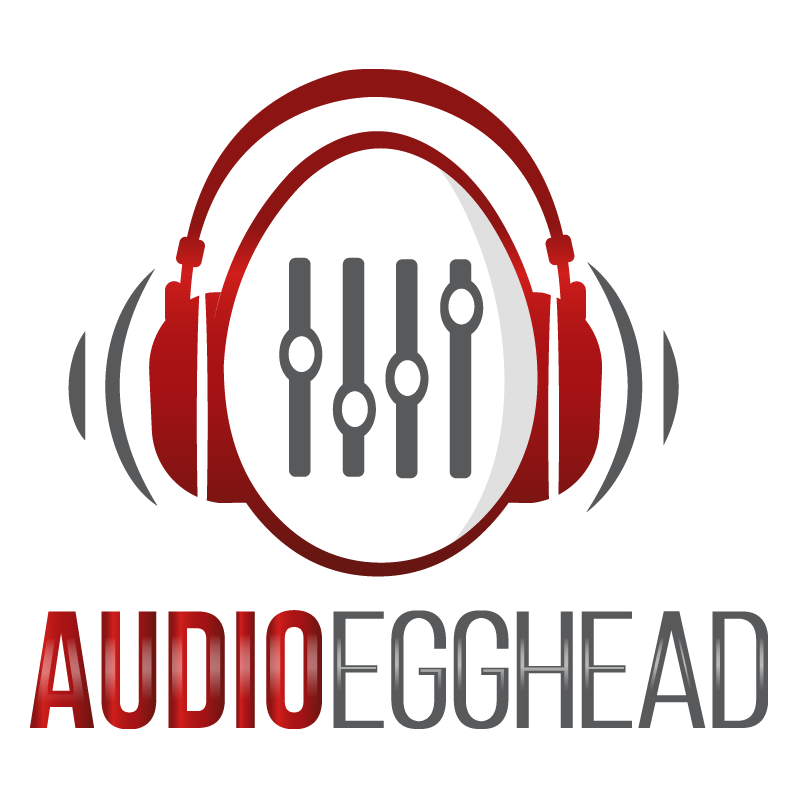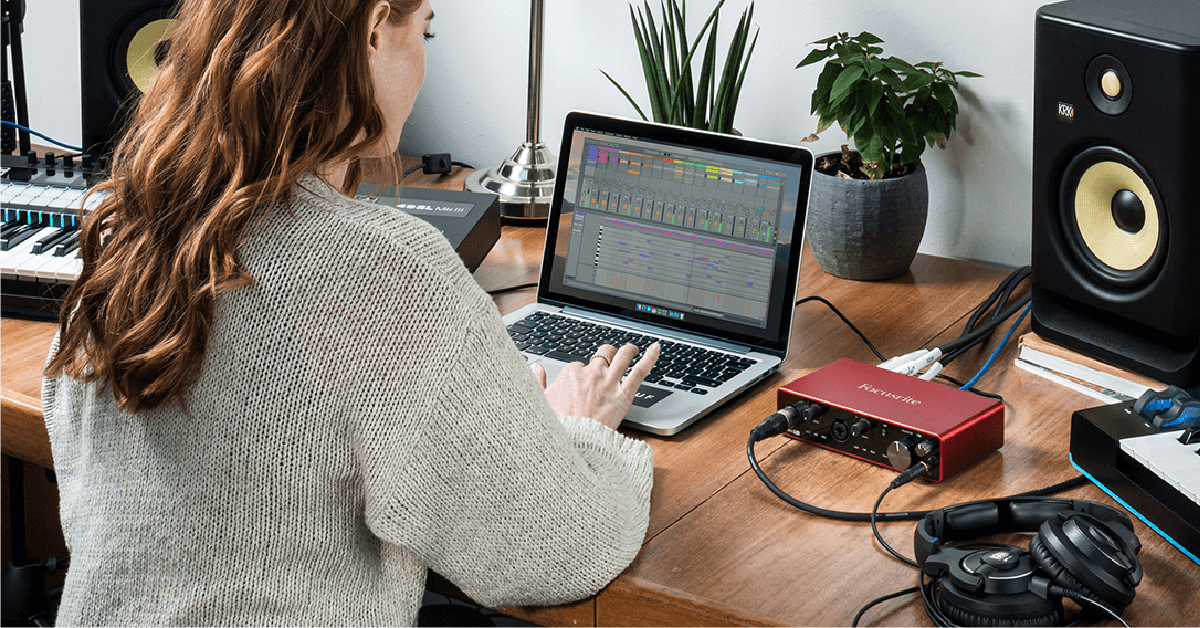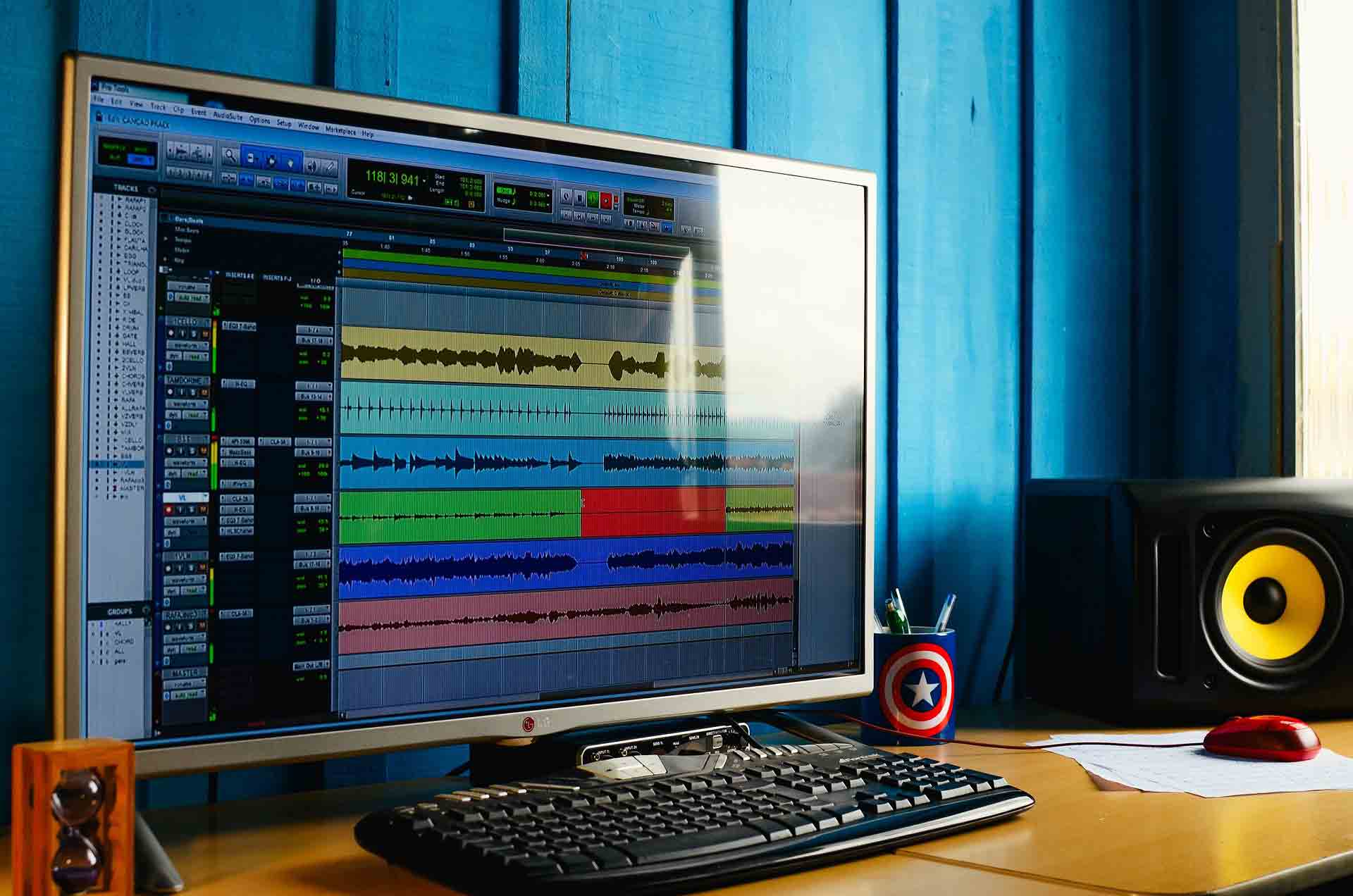Let’s be frank; no one wants to listen to music or podcasts with unprofessional sounding audio, and a high end microphone isn’t the only important part of the equation. The first and most often overlooked step to capturing and transferring high fidelity audio for any kind of home studio set-up is choosing the audio interface that will best suit your individual needs.
Thankfully, you don’t need the most expensive equipment to record and transfer audio without interference, as there are a variety of affordable audio interfaces designed specifically for smaller personal studios. We’ve taken a look at a few different products in the Scarlett audio interface line and compared their pros and cons to help you find the perfect match for your production.
What Is an Audio Interface?
Audio interfaces are pieces of hardware that extend the audio processing capabilities of home computers. By themselves, computers often don’t offer a large amount of audio in and out options for connectivity, and the few that are included by default create noise and unsatisfactory audio artifacts.
To remedy this, audio interfaces simply plug into an existing computer using one of a variety of standard hookups and handle more intense audio processing within the unit itself, allowing you to route audio – from a microphone, for example – into and out of recording or editing software on the computer freely, while drastically improving the overall quality of the sound. Scarlett audio interfaces are designed specifically to offer this kind of usability and feature rich flexibility without breaking the bank.
Scarlett Audio Interface: Product Specs
To begin our review, we’ll take a look at the technical specifications of one of the world’s most popular audio interfaces, the Focusrite 2i2 Scarlett audio interface. This model’s perfectly moderate amount of ports and connectivity make it highly flexible without offering more than most consumers would need and subsequently inflating the price tag.
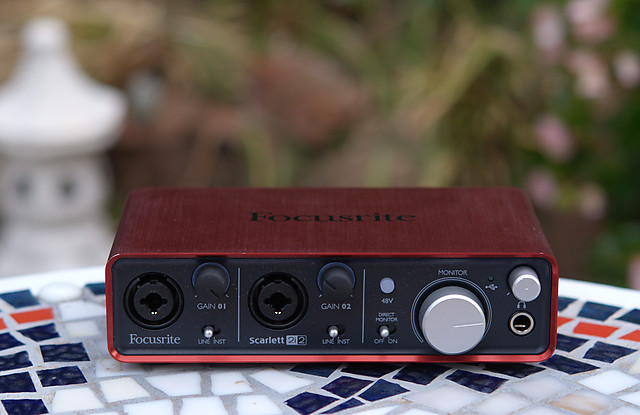
Features
This Scarlett audio interface features two microphone plug in preamps with gain knobs as well as two line level audio inputs. Two line level audio outputs, as well as headphone outputs, are also incorporated. It is highly portable and requires only a single USB interface connection for both power and audio transfer.
This model supports high-quality audio conversion and sample rates up to 192kHz/24-bit. Both microphone inputs have a frequency response of 20Hz – 20kHz plus or minus 0.25db, a noise EIN of less than -128dBu, an impedance of 3k ohms, and a phantom power output of 48V. The line inputs sport a dynamic range of 106dB, as well as an impedance of 5 Stars2k ohms with a maximum input level of 22dBu.
Size and Design
The case of the unit is 175mm x 45mm x 100 mm, with a weight of 0.5kg. In addition to the inputs and outputs offered by the hardware, a variety of unique design elements and included software make it even easier to get the perfect home recording.
Light halos around the gain knobs make it a snap to get the right levels for recording, and a headphone output for monitoring ensures your recordings will sound just right.
This model is perfect for recording and getting the best sound quality with two people speaking at once. The Scarlett Red Plug-in Suite control software is included for free with the purchase of any Scarlett Audio Interface, which includes Softube Time and Tone Bundle.
Overall Pricing
The Scarlett interfaces on this list feature price points ranging from $100-$500, with an increased price coinciding with a higher number of in and out audio ports. As these models are all from the same manufacturer and in the same line, audio quality is roughly similar across all models. However, more expensive models do have marginally better technical specs.
What We Compared it With
We compared the 2i2 to three other Focusrite products in the line to see how they compare in terms of specs, Ease of Use, and the number of inputs/outputs you get for the price.
But First…More on the Focusrite 3rd Gen Scarlett 2i2
Price $$
Ease of Use: 5 out of 5 Stars
There’s a reason this is an audio interface favorite with real staying power amongst musicians and audiophiles alike. Consistent quality, along with portability and ease of installation with a single USB connection, take this model beyond being just a quick fix.
It comes with the Focusrite Creative Pack, and the compatibility is great for working with recording software or DAW (Digital Audio Workspaces) such as Pro Tools, Ableton Live, and Ableton Live Lite. All models of Scarlett Audio Interfaces also come with Protools| First Focusrite Creative Pack included for free, whether you are using a Mac or a PC.
Inputs & Outputs: 4 out of 5 Stars
With two ins and outs for mics and two line level mic preamps or instrument inputs and outputs, this model sports a standard amount for small audio interfaces at this price range, perfect for plugging in an electric guitar, and offers low latency as well.
Best for:
This model is excellent for a home recording studio or podcasting operation, more than enough for one person and ideal for a duo.
Warranty: 4 out of 5 Stars
Repairs and replacements are covered by Warranty: from the manufacturer in the event of a manufacturing defect for a period of 24 months following the date of initial purchase.
Pros
- Good value
- High quality performance
- Portable yet flexible
Cons
- Not necessarily ideal for a solo podcaster
- Somewhat expensive compared to other 2i/2o audio interfaces on the market
Focusrite 3rd Gen Scarlett Solo
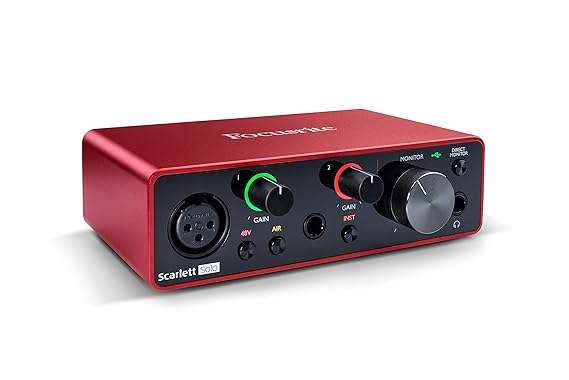
The second Scarlett audio interface of our list is essentially the above model but minus a mic and line in. It sports one mic in, one line in, and two line outs as well as a headphone out for monitoring. This smaller size and slightly reduced price tag make it an ideal option for those simply looking to get the best out of their microphone without looking to invest in a more expansive model. It is only slightly smaller than the above model, but is nonetheless portable and convenient to install, requiring just one USB cable for power and audio transfer.
This model supports high-quality audio conversion and sample rates up to 192kHz/24-bit. The microphone input has a frequency response of 20Hz – 20kHz plus or minus 0.5db, and a noise EIN of less than -127dBu. The line input sports a dynamic range of 109dB, with a maximum input level of 22dBu.
The case of the unit is 150mm x 45mm x 100mm with a weight of 0.5kg. In addition to the inputs and outputs offered by the hardware, a variety of unique design elements and included software make it even easier to get the perfect recording.
Price $
Ease of Use: 3 out of 5 Stars
Although portable and easy to install, this model’s single microphone input and the notable lack of phantom power for mics means there may be situations where its shortcomings become a hindrance.
Inputs & Outputs: 2 out of 5 Stars
One microphone in and line in is more than enough for one person, but the price isn’t drastically reduced from the above model.
Best for:
This model is an excellent quick fix for a recording artist or solo podcaster who’s simply looking for a way to hook their microphone up to their computer and record the best sounding audio possible without fully investing in a large scale home studio.
Warranty: 4 out of 5 Stars
Repairs and replacements are covered by Warranty: from the manufacturer in the event of a manufacturing defect for a period of 24 months following the date of initial purchase.
Pros
- Most inexpensive model
- Portable and easy to install
Cons
- No phantom power for mics
- Only one microphone in
- Not drastically less expensive than the more richly featured 2i2 model
Focusrite Scarlett 18i8

This Scarlett audio interface features four microphone preamps with gain knobs as well as four line level audio inputs, 2 S/PDIF inputs, and 8 ADAT inputs. There are four line level audio outputs, as well as two headphone outputs and 2 S/PDIF outputs. It requires only a USB connection for audio transfer to studio monitors, but needs to be powered from the mains with an included adapter.
This model supports high-quality audio conversion and sample rates up to 192kHz/24-bit. The microphone inputs have a frequency response of 20Hz – 20kHz plus or minus 0.5db, a noise EIN of less than -127dBu, and an impedance of 3k ohms. The first four line inputs sport a dynamic range of 109dB, with a maximum input level of 22dB. The second four line inputs possess a slightly greater dynamic range of 110dB, but a slightly lesser maximum input level of 16dBu. Both have an impedance of 5 Stars2k ohms.
The case of the unit is 227mm x 180mm x 66mm, with a weight of 1.64kg. In addition to the inputs and outputs offered by the hardware, a variety of unique design elements and included software make it even easier to get the perfect recording. Light halos around all four gain knobs make it easy to get the right level for recording, and two headphone outputs allow for two people to be listening in on the recording as it happens.
Price $$$
Ease of Use: 4 out of 5 Stars
Although this model offers broad functionality and many ins and outs, the larger number of potential audio connections, some of which amateur audio enthusiasts may not even be familiar with, make this a more difficult-to- master model. It also should be noted that this model cannot be powered by its USB connection alone.
Inputs & Outputs: 5 out of 5 Stars
As it says in the name, this model supports 18 inputs and 8 outputs, four of which are for microphones.
Best for:
This model is excellent for large-scale or collaborative efforts that require a group of people to be mic’d at once or for one or two people who need the extra inputs for extra live audio of any sort.
It’s also perfect for a recording studio or bedroom studio where you’ll have multiple instruments or microphones hooked up at one time.
Warranty: 4 out of 5 Stars
Repairs and replacements are covered by Warranty: from the manufacturer in the event of a manufacturing defect for a period of 24 months following the date of initial purchase.
Pros
- High number of inputs and outputs
- High-quality audio conversion
- Varieties of inputs and outputs not offered by the above models
Cons
- More intensive setup and installation
- Less portable
Focusrite Scarlett 18i20

This final model is the most expansive model available in the Scarlett audio interface line, taking the concept of a USB audio interface to its maximum capacity for audio in and out and beyond. Even the most complex arrangements of audio equipment and microphones will be easy to tackle without losing the immediate convenience of a single USB plug. It sports 8 microphone input and line inputs as well as 2 s/PDIF and 8 ADAT inputs. The outputs are the same, plus an extra 2 analogue outputs. It requires only a USB connection for audio transfer, but needs to be powered from the mains with an included adapter.
This model supports high quality audio conversion and sample rates up to 192kHz/24-bit. The microphone inputs have a frequency response of 20Hz – 20kHz plus or minus 0.5db, a noise EIN of less than -127dBu. The line inputs sport a dynamic range of 109dB, with a maximum input level of 22dB.
The case of the unit is 482mm x 265mm x 45mm, with a weight of 3kg. Along with the halo light knob and USB features of the above models for convenience, this model sports a unique Hi-Fi style EQ display, mixing controls, and rack mounts.
Price $$$
Ease of Use: 3 out of 5 Stars
Though this model is as fully featured as a USB audio interface can get, the relative complexity of the unit is also quite high; and it can’t be considered compact or portable at all.
Inputs & Outputs: 5 out of 5 Stars
This model sports enough inputs and outputs to mic an entire band, let alone a podcast.
Best for:
Although this is truly intended to be used in a musician’s home studio, a podcast with complicated live performances or mic setups would benefit greatly from the addition of this piece of hardware.
Warranty: 4 out of 5 Stars
Repairs and replacements are covered by Warranty: from the manufacturer in the event of a manufacturing defect for a period of 24 months following the date of initial purchase.
Pros
- Most extensive audio input and output management
- EQ display and mini mixer
- Affordable when considering the number of inputs and outputs on offer and audio quality for a USB audio interface
Cons
- Most expensive of the list
- Not portable, designed for rack usage
So, Which One Should You Get?
When all is said and done, the ideal audio interface is one that compliments your intended or preexisting audio setup. If it’s just two people and two mics for podcasting, or one to two instruments at a time for a recording studio, there’s no reason to go bigger than the Scarlett 2i2.
However, for drastically more ambitious or complex arrangements, Scarlett offers a model in each size, from the medium-sized Scarlett 18i8, to the backpack-sized Scarlett 18i20. We hope that our list has helped to introduce you to the best audio interface for your music studio and/or podcasting needs.
